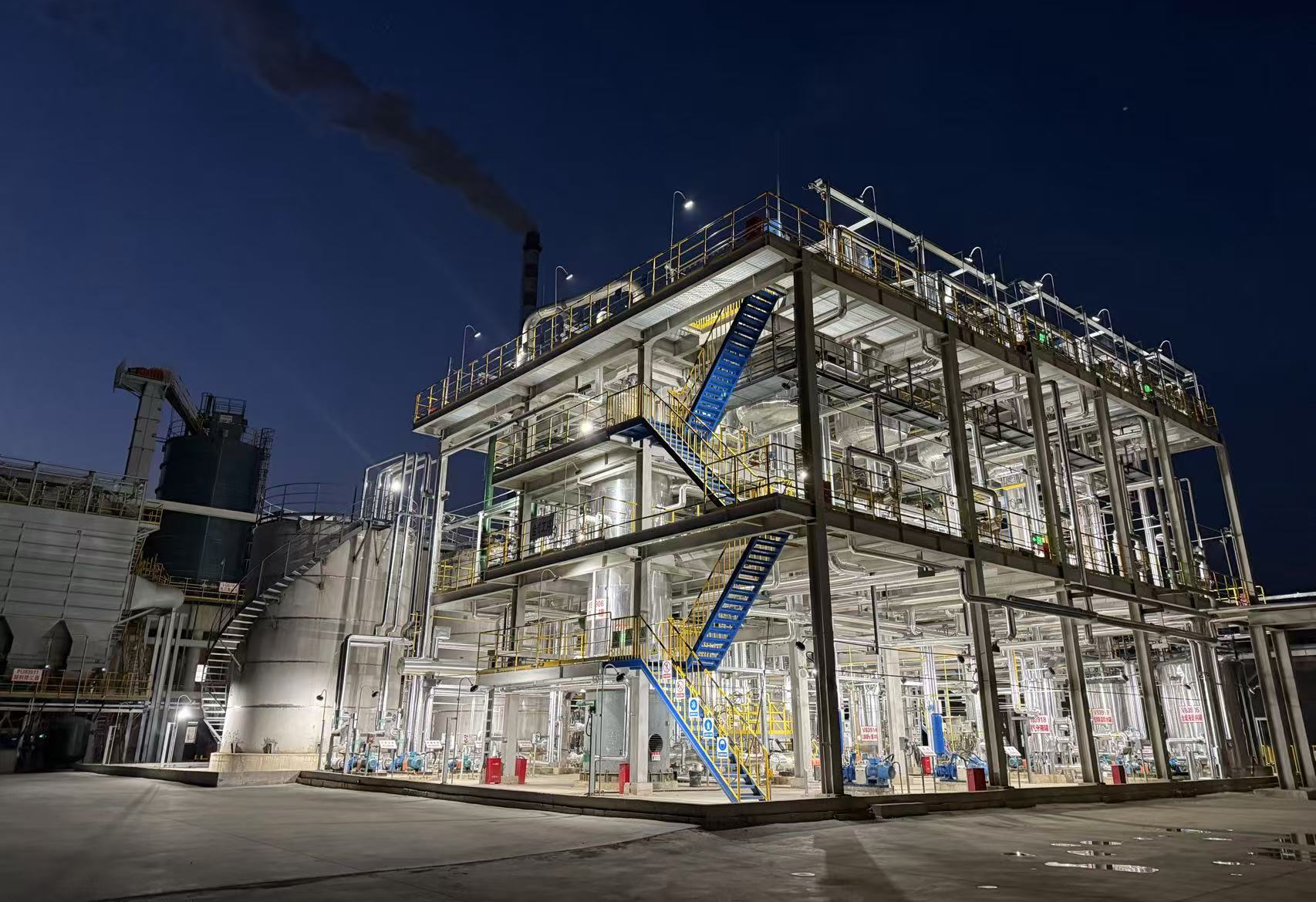TJU Technology Powers World's Largest Calcium Formate Plant
The world's largest calcium formate plant, built using innovative technology developed by Tianjin University's C1 Chemistry and Technology research team, has begun operations in Shandong Province. Capable of producing 50,000 tons annually, the plant transforms industrial waste gases into valuable products, marking a major leap in sustainable industrial practices.
China's metallurgy and chemical industries generate over 45% of industrial air pollutants, with steel plants and other processes releasing significant carbon monoxide (CO) emissions. These emissions are often burned as fuel, leading to high CO2 output and underutilization. Tianjin University's innovative technology addresses this challenge by converting CO-rich industrial gases into high-value chemicals, aligning with China's "dual carbon" goals.

50,000-Ton/Year Steel Plant Tail Gas-to-Calcium Formate Facility at theShandong Astor Technology Co., Ltd.
Calcium formate, a versatile and eco-friendly additive, is widely used in animal feed, construction, textiles, and chemical industries. Traditional production methods rely on costly processes with subpar product quality. Tianjin University’s novel carbonylation synthesis process uses quicklime or hydrated lime derived from carbide slag and CO from industrial tail gases to produce high-quality calcium formate. This cost-effective, energy-efficient process enables continuous production and is ideal for large-scale applications.
In collaboration with Shandong Astor Technology Co., Ltd., Tianjin University transformed tail gases from the parent company, Shiheng Special Steel Group, into high-value applications. Remarkably, the plant was constructed and brought to full-capacity production in just six months, setting a new benchmark for rapid industrial deployment.
This project builds on the success of a 2018 collaboration between Tianjin University and Shandong Astor, which resulted in a stable 50,000-ton-per-year oxalic acid facility. Building on these achievements, Tianjin University’s C1 Chemistry and Technology research continues to develop innovative solutions for syngas and CO2 utilization, advancing sustainable industrial practices.
This landmark project highlights the transformative power of innovative technologies in turning industrial waste into valuable resources. By advancing sustainable industrial practices, Tianjin University is not only driving progress toward China’s dual carbon goals but also setting an example for global green development.
By Eva Yin

